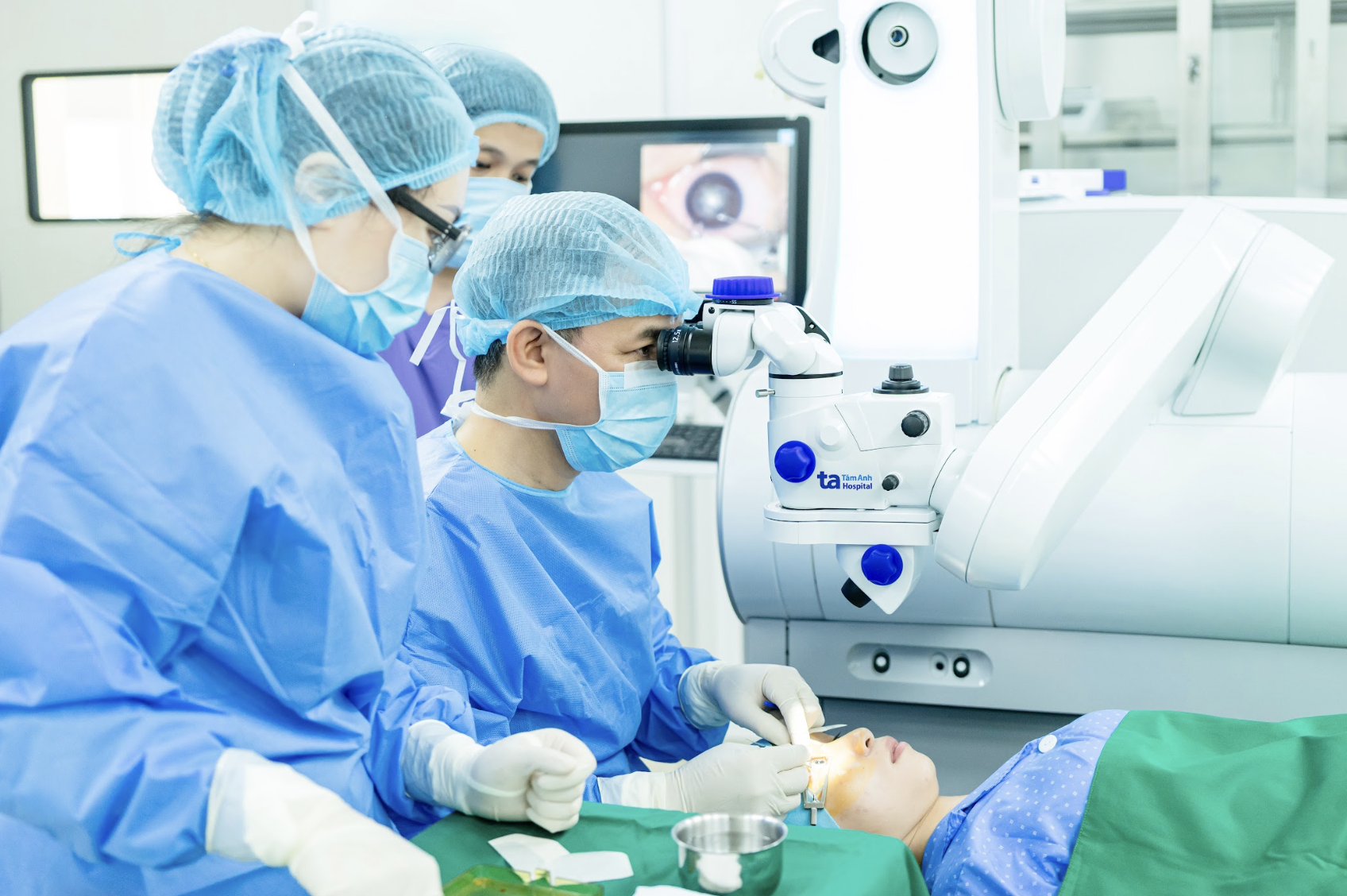After confirming Nguyet's stable nearsightedness, Dr. Dinh Trung Nghia, deputy director of the High-Tech Eye Center at Tam Anh General Hospital in Ho Chi Minh City, ordered specialized tests to screen her before refractive surgery. If her nearsightedness was unstable, her cornea not thick enough (at least 420 micrometers), or if she had any serious eye diseases, she would not be eligible for the procedure.
Corneal topography helped rule out a thin cornea, keratoconus, or other corneal diseases. Higher degrees of nearsightedness require the removal of more corneal tissue, so the cornea must be thick and healthy enough for safe surgery. A retinal examination screened for abnormalities like glaucoma (which can damage the optic nerve) or other retinal or optic nerve issues.
Based on the screening results, Dr. Nghia determined Nguyet was eligible for SMILE Pro, a minimally invasive procedure with a quick recovery time. Professor Nguyen Xuan Hiep, director of the High-Tech Eye Center, used a femtosecond laser to create a lenticule within the cornea in about 10 seconds per eye. A small, 2 mm incision was then made to remove the lenticule, reshaping the cornea and correcting nearsightedness without creating a corneal flap.
 |
Professor Hiep (seated) treating Nguyet. *Photo: Tam Anh General Hospital* |
The Visumax 800 system’s precise cyclorotation tracking compensates for astigmatism, improving accuracy and optimizing treatment outcomes. According to Dr. Nghia, the SMILE Pro method also reduces dry eye by over 80% compared to traditional LASIK and causes almost no redness or swelling after surgery.
One day after surgery, Nguyet's vision was restored to 20/20. After three days, she experienced no dryness, fatigue, or eye pain and was able to return to her normal activities.
 |
Nguyet before (left) and after (right) refractive surgery at the High-Tech Eye Center. *Photo: Tam Anh General Hospital* |
Following post-operative care instructions and using prescribed eye drops correctly ensures optimal results. For the first two weeks, patients should avoid rubbing their eyes, contact with water, dust, or bright light, and should wear protective glasses continuously, even while sleeping. Initially, they should also avoid extended reading, computer use, or looking at their phones to allow their eyes to rest. Regular follow-up appointments are necessary, or if dryness, eye strain, or vision changes occur, to monitor for any abnormalities and allow for timely intervention.
Duc Tri
| Readers can submit questions about ophthalmology here for doctors to answer. |












